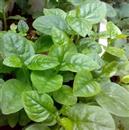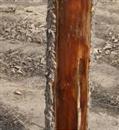Biological characteristics and High-yield cultivation techniques of Auricularia auricula

First, an overview of black fungus, also known as fungus, light fungus, cloud ear. Classified into basidiomycetes, Tremella, Auriculaceae, Auricularia. There are more than ten species in this genus, such as Auricularia auricula, horny fungus, shield-shaped fungus and so on. Only Auricularia auricula is rich and tender in texture and delicious in taste, which is known as Shanzhen. Auricularia auricula has a long history in China and has long been recognized and used by the working people. It was recorded in Zhou Li more than 2100 years ago, and the method of processing Auricularia auricula with Auricularia auricula was recorded in Qi Min Yao Shu written by Wei Jia sixie. Notes on Tang Materia Medica written by Su Gong and others in the Tang Dynasty also recorded the tree species and methods used to produce Auricularia auricula at that time. Li Shizhen, a medical scientist in the Ming Dynasty, recorded in the Compendium of Materia Medica: "Auricularia auricula was born on rotten wood."... [smell] Ganping. (attending) replenishing qi without hunger, lightening the body and strengthening one's ambition. Duan Kui treats hemorrhoids. Leakage in the collapse, blood dysentery under the blood. It can be seen that in ancient China, in addition to Auricularia auricula as a delicacy, and the medicinal use of Auricularia auricula has also been quite studied. According to modern scientific analysis, every 100 grams of fresh Auricularia auricula contains 11 grams of water, 10.6 grams of protein, 0.2 grams of fat, 65 grams of carbohydrates, 7 grams of cellulose and 5.8 grams of ash (including 375 mg of calcium, 201 mg of phosphorus and 180 mg of iron). In addition, it also contains a variety of vitamins, including provitamin A (carotene) 0.031 mg, vitamin B 0.7mg (of which B10.15mg, B20.55mg), vitamin C 217mg, provitamin D (ergosterol) and liver sugar. Therefore, Auricularia auricula has rich nutrition and delicious taste. The drug action of Auricularia auricula: it is suitable for nourishing strong, clearing lung and tonifying qi, tonifying blood and activating blood, postpartum weakness, hand and foot cramp numbness and other diseases. at the same time, because Auricularia auricula is a glial fungus, the fruiting body is rich in colloid. it has a good clear and smooth effect on human digestive system. It can remove the accumulated rotten food and indigestible fibrous food in the intestines and stomach, and the effective substance in Auricularia auricula can clear and moisturize the lungs after being absorbed by the human body, so it is also one of the health foods for textile workers and mining workers. According to a study by the School of Medicine of the University of Minnesota, regular consumption of Auricularia auricula can reduce the normal clots of human blood and prevent and treat cardiovascular disease. Auricularia auricula in China ranks first in the world in terms of output and quality. it is our fist export commodity, which is sold at home and abroad, and enjoys a high reputation in Southeast Asian countries. in recent years, it has entered the European and American markets with high foreign exchange value. 2. Biological characteristics of Auricularia auricula Auricularia auricula is a kind of gelatinous bacteria, which belongs to the fungal phylum, which is composed of mycelium and fruiting body. The mycelium is colorless and transparent and is composed of many tubular hyphae with transverse septum and branches. It grows in rotten wood or other substrates and is the vegetative organ of Auricularia auricula. The fruiting body grows laterally on the surface of wood or culture material and is not only its reproductive organ, but also the edible part of people. Fruiting body at birth like a small ring, in the continuous growth and development, stretched into a wavy individual, belly concave and smooth, veined, back protruding, edge slightly curled, the whole shape is quite similar to the human ear, hence the name. The hyphae developed to a certain stage to kink into fruiting bodies. When fresh, the fruiting body is colloidal, translucent, dark brown and elastic. After drying, it shrinks into horniness, the ventral surface is smooth and painted black, hard and sparse, and the back is dark and light, with short villi, which can still be restored after water absorption. The fruiting body produces basidiospores (seeds) at maturity. Basidiospore is colorless, transparent, sausage-shaped or reniform, smooth, in the ventral side of the ear piece, mature and dry, spread everywhere through the air to reproduce its offspring. Auricularia auricula is a saprophytic fungus that does not have chlorophyll and cannot make its own food. It relies on organic matter from other organisms as its nourishment. At the same time, it engages in saprophytic life and can only grow and develop on dead organisms. Its hyphae have a strong ability to decompose the cellulose and hemicellulose in the organism, which can finally crush the organism. Under suitable conditions, the basidiospores of Auricularia auricula germinate into hyphae, or form conidia, which germinate and regenerate hyphae. Due to the continuous growth of the hyphae, it gradually branched again, and the transverse septum was formed in the branches, which developed into a tubular villous hyphae with only one nucleus in each diaphragm, namely uninucleate hyphae. This kind of hyphae produced by single spore germination has the distinction between positive and negative genders, and this kind of hyphae is called primary hyphae or primary hyphae. Then through the contact and fusion of the tip cells of two uninucleate hyphae of different genders, a binuclear cell was formed, and the binuclear cells developed into nuclear hyphae by locking. At this time, the hyphae continue to grow and develop, and produce a large number of branches to spread to the depth of the organism, absorbing a large amount of nutrition and water, ready for further development into a fruiting body, once the conditions are ripe, fruiting body primordia are produced on the surface of the organism.
- Prev

Prevention and control techniques of diseases of Moschus auriculata
The main diseases of Schima auriculata are brown spot disease (also known as fish eye disease), red spot disease, snake eye disease, sun spot, etc., which can cause harm from seedling to harvest end, mainly damaging leaves. At the beginning of the damaged leaf, there are purple water-soaked dots, concave, and gradually enlarged later. Severe disease spots can reach more than 100, each other into a serious disease...
- Next

Poplar bark rot
Distribution and harm of poplar skin rot, that is, poplar rot. Poplar cultivation areas occur in China, but they are mainly distributed in Northeast, Northwest, North China and other areas. It is a common and frequently-occurring disease of poplars in parks, green spaces, street trees and nurseries, which often causes a large number of street trees to die, especially the newly transplanted poplars. The disease.
Related
- Fuxing push coffee new agricultural production and marketing class: lack of small-scale processing plants
- Jujube rice field leisure farm deep ploughing Yilan for five years to create a space for organic food and play
- Nongyu Farm-A trial of organic papaya for brave women with advanced technology
- Four points for attention in the prevention and control of diseases and insect pests of edible fungi
- How to add nutrient solution to Edible Fungi
- Is there any good way to control edible fungus mites?
- Open Inoculation Technology of Edible Fungi
- Is there any clever way to use fertilizer for edible fungus in winter?
- What agents are used to kill the pathogens of edible fungi in the mushroom shed?
- Rapid drying of Edible Fungi

